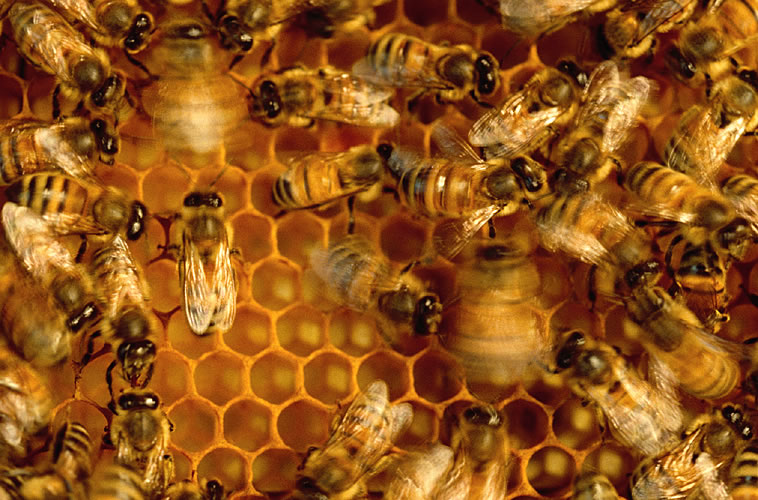Dance Bee Dance
Biology 342 Fall 06 A. Mahan
| Home | Phylogeny | Ontogeny | Mechanism | Adaptive Value | References | Course Home |
Bees Use a "Waggle Dance" to Communicate With Hivemates
The location of a food source can be communicated through a series of descriptive movements.
In the 1960's, Karl von Frisch showed that common honey bees, Apis mellifera, have a complex system of intra-hive communication. By studying the behaviors of the bees within their hives, von Frisch was able to decipher their movements and interactions and develop a theory of how and why this communication was taking place. The theory identified a "waggle dance" that was the crux of the communication system that is widely recognized today as an important method of reporting information about food sources. The bees, von Frisch found, are able to use two types of dance to describe the specific location of a promising food source: the round dance for nearby sources and the waggle dance for sources more than 80 meters away (Von Frisch 1956, 1967).
The behavior works as follows: female foraging bees leave the hive daily in search of food. When a forager discovers a reliable source of food, she returns to the hive and relays important information about its location in order to recruit other foragers to the site. Within a dark hive, her hivemates must feel her physical movements and be able to decipher their meaning precisely in order to find the food source (Image: Camazine).
The waggle dance of honeybees has been the subject of intense research and general interest since its initial discovery because this complex communication system is one of the most advanced physical information transfer systems known in non-primates (Sherman 2002). Von Frisch's work earned him a Nobel Prize in Physiology in 1973 and today research on the honey bee waggle dance continues. Every year, new discoveries add to our understanding of this intricate system.
